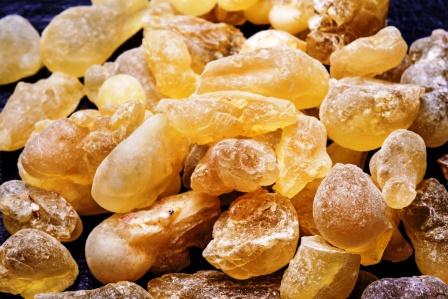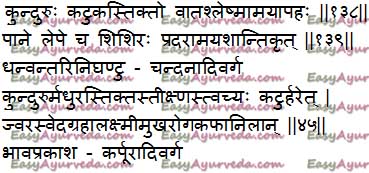By Dr Renita D’Souza
Salai guggul is a fragrant gum resin extracted from Shallaki tree (Boswellia serrata). It is well known Ayurvedic medicine used in arthritis. It relieves pain, swelling, stiffness, crepitus and improves joint mobility.
Table of Contents
ToggleVernacular Names, Synonyms
Vernacular Names
Hindi – Salai guggul
Gujrathi Name – Dhupado
Bengali Name – Salaidhup
English Name – Indian olibanum
Sanskrit Synonyms
Kunduru, Mukunda,
Sugandha – it gives good aroma.
Kunda

Medicinal Qualities, Shloka
Medicinal Qualities of Salai Guggul
Rasa (taste) – Madhura (sweet), Tiktha (bitter)
Vipaka (post digestive effect) – Katu (pungent)
Virya (potency) – Ushna (hot)
Guna (qualities) –
Teekshna – penetrating in nature
Laghu – light to digest
Twachya – its good for skin, improves complexion.
Raktha shodak – It purifies blood and used in blood related diseases such as bleeding disorders, menorrhagia, ulcers, skin conditions etc.

Indications, Research
Indications
Jwara – Fever
Sweda – Excess sweating
Graha – Psychiatric disorders
Alakshmi – depression, bad luck (Salai guggul is used as Dhoop in Pooja of Hindu rituals. During this, all the rooms of the house is exposed to the fumes of burning Salai guggul. This is believed to purify the house and take away bad energies out of the house).
Mukharoga – Oral diseases like halitosis (bad breath), gum swelling, gingivitis, mouth ulcers etc
Shwasa – Asthma
Granti – tumours, goitre
Vrana -It heals both external wound and internal wounds such as peptic ulcers, ulcerative colitis etc
Due to its anti arthritic, anti inflammatory and analgesic property it is used in rheumatoid arthritis, osteoarthritis, ligament tear etc
Post viral fever, when the patient complains of body, muscle and joint pains
It is useful to promote strength of bones and joints.
It acts as an excellent anti inflammatory and analgesic medicine.
It is used for the treatment of ankle pain, ankle twitch, slipped disc, sprain, back spasm, backache, back injury, stiffness of muscles, Coccyx pain
Bursitis,
Bursitis trochanterica,
Shoulder dislocation pain
Partially useful in (other medications might be required)
Avascular necrosis
Sensory-neural hearing loss
Hypothyroidism
Ankylosing spondylitis
Pain related to SLE
Diet
Avoid deep fried foods, heavy-to-digest non veg foods, fast foods and aerated drinks, smoking and excess alcohol. These can irritate stomach and intestinal lining. These also may increase Tridosha.
Research
Research study conducted to assess the efficacy of shallaki resin on Osteoarthritis have concluded its significant effect over improving joint mobility, stiffness and relieving joint pain. The study also confirms the
hypolipidemic effect of shallaki. (Read more here)
Dose, Effects on Tridoshas
Dose
1 – 3 grams
Effect on Tridoshas
Balances Kapha and Vata Dosha
How to use Shallaki Resin?
It can be used as single medicine or mixed with other ingredients to improve its efficacy. It is used both for oral intake and external application.
Adjuvant – It is taken internally along with luke warm water.
Local application – Paste is prepared by rubbing it with hot water. This paste is applied over the affected area.
Therapeutic use, Collection, Appearance
Therapeutic usage of Salay Guggulu
In osteoarthritis its paste is prepared by rubbing in hot water and applied over the joints.
In chronic swelling or tumours its paste can be applied with unctuous substance.
Collection of Salai Guggulu
Collection of salai guggulu is made by making small incisions on trunk of shallaki tree. The incisions are made between November to July month.
The oleo gum resin oozing out from incised area is collected and stored in bamboo basket for 1 month. The liquid content flows out from the basket. The semisolid aromatic gum resin left in the basket slowly gets harden.
The hard portion is broken into pieces and the impurities are removed manually.
The market available gum resin is graded according to its colour, shape, size and flavour.
Appearance of Gum resin of Boswellia serrata
Color – brownish yellow
Odor – aromatic
Chemical composition, Classical categorisation, Side effects
Chemical composition of Gum resin of Shallaki
Monoterpenes (α-thujene); diterpenes, triterpenes, boswellic acids, tetracyclic triterpenic acids (tirucall-8,24-dien-21-oic acids)
Classical categorisation
Bhavaprakasha – Karpuradi varga
Raja Nighantu – Chandanadi varga
Dhanvantari Nighantu – Chandanadi varga
Kaiyadeva Nighantu – Aushadi varga
Side Effects of Shallaki resin
It may cause gastric irritation in people with sensitive stomach.
Check for allergic reaction on local application by applying little amount over the forearm skin.
Seek medical guidance for its use during pregnancy.
Ayurvedic Medicines with Salai Guggul Ingredient
Boswellia capsule / Salai Guggul of Patanjali
Arthronav Liniment – Used in treatment of Arthritis, Backache, Spondylitis, sprains, sciatica etc
Inflanil Oil – It is used as for external application in cases such as
Chronic rheumatism, hemiplegia, facial paralysis and sciatica.
Jirakadi Modak – Used in the treatment of diarrhoea, bleeding per rectum, chronic fever, colitis, IBS, abdominal colic
Shallaki Tablet – Used in the treatment of Rheumatoid arthritis and Back pain.
Arrow Tablet – It is used for joint pain and other arthritic disorders.
Arthrella Tablet – It is used to relieve arthritic pain, inflammation, joint stiffness, prevents joint deformity etc
Alopagesic Tablet – Mainly used to treat arthritis
Arthocare Capsule – Used to treat rheumatic diseases. It strengthens the muscles, tendons and ligaments.
Strong Joint Tablet – It is indicated in Osteo Arthritis, Cervical and Lumbar spondylosis, Sciatica, Frozen shoulder and Gouty arthritis
Pilocon Capsule – Used in piles, anal fissure, Inflammation of anal tract etc
Research
A study has been conducted on anti inflammatory effect of resin of Boswellia serrata.(A)
Habit forming
Is
this medicine habit forming? Does it create dependence? Can we stop it after a
few months of usage?
This
medicine is not habit forming. After using for the prescribed period, your
doctor would gradually decrease the dose and eventually stop it. Follow your
doctor’s instructions for gradual decrease of dose and stopping. Usually it
does not cause any ill effects.
Click to Consult Dr Renita D’Souza
Please consult your doctor before taking this medicine.
This article is written by Dr. Janardhana V Hebbar BAMS, MD (Ayu), PGDPSM, Managing Director, Easy Ayurveda Hospital.
It is reviewed by Dr. Raviganesh Mogra BAMS, MD (Ayu), Chief Medical Officer, Easy Ayurveda Hospital








